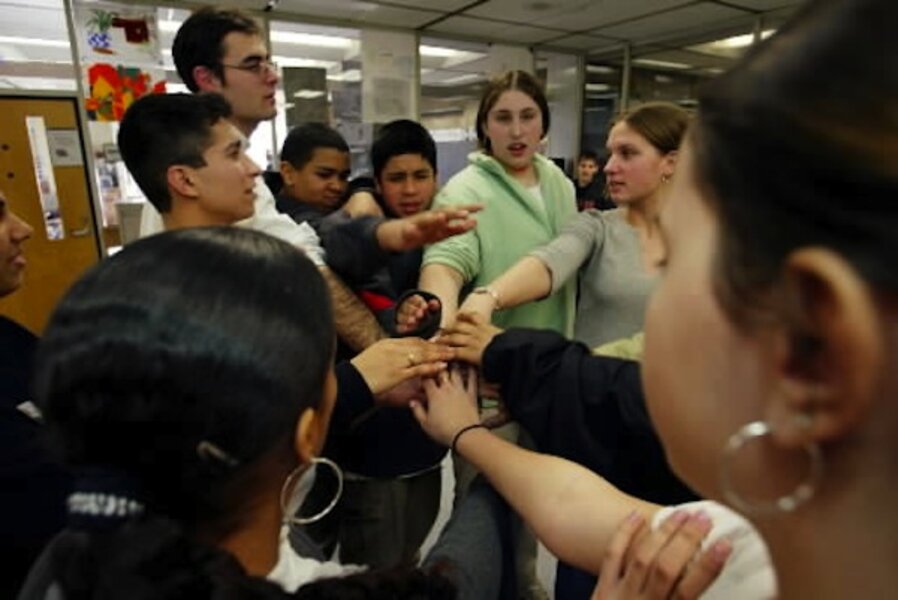Teens and volunteering: Altruism or just peer pressure?
Loading...
Read the news, and you might think teenagers’ lives are all sexting and bullying and Facebook. Especially if you don’t have one in your household to prove you wrong.
But not so. According to a new study released yesterday by the social change website DoSomething.org, American teens are also spending their free time – some of it, at least – volunteering.
How much volunteering they actually do, though, and why they do it, reveals some interesting aspects to how young Americans are prioritizing their lives.
To start first, though, with the basics:
DoSomething.org’s “index on young people and volunteering,” during which researchers collected data from more than 4,300 internet-using 13- to 22-year-olds, found that more than half of young people (54.2 percent) volunteered in 2011. And it’s not just because these students had to volunteer for school: 63 percent did not have any requirement to do service work.
These numbers are higher than in other studies. Federal government data, for instance, show that only 22.5 percent of young adults volunteered in 2011. DoSomething.org's researchers say the discrepancy comes from different definitions: Most research has defined volunteering as “work done through an organization for which there is no pay.” The DoSomething.org survey, on the other hand, described volunteering as work done for no pay for any group or organization, with friends, or by oneself.
They say their terminology is far more accurate – “organizations,” they say, are terribly passé. These days kids are just as inclined to design their own, independent, volunteer activities, they say. But they also acknowledge that half of the young people they identified as “volunteers” actually volunteered less than every few months.
Still, you get some interesting demographic information through this wider definition. Young people in the northeast are far more likely to volunteer (59.6 percent of them do) than those in the south (50.9 percent). Meanwhile, 69.6 percent of young people from wealthy families volunteer, compared with 43.9 percent of young people from low-wealth families. (This changes, by the way, if those lower income kids are at a private school. Then 71.4 percent of those teens and early 20-somethings volunteer.)
All of this might lead you to wonder: Are students just volunteering because they think it will help them get into college or get a job?
After all, the stats seem to suggest as much: You’ve got higher volunteerism rates in private schools and among wealthier kids – the same students one might assume would be most conscious of what looks good on a resume or college application form.
The answer, DoSomething.org’s researchers say, is yes and no.
Boys said that “to get into college” and “to get a good job” were the No. 2 and 3 reasons they volunteered. No. 1 was to help a “cause I care about.” Girls, on the other hand, listed the top reasons for service work as helping out an important cause, the desire to “make a difference that matters,” and “volunteering is its own reward.”
The catch: Through a number of “revealed motivation” questions, researchers found that for both genders, friends are the true motivator of volunteerism. In brief, if their friends are doing it, they want to do it.
Sound like the teens you know?
RELATED: Are you a 'Helicopter Parent?' take our QUIZ!
Researchers found that 75.9 percent of those whose friends volunteer on a regular basis also volunteer. The number drops to 41.7 percent if a teen’s friends did not volunteer regularly. Additionally, those young people who spend most of their time out of school with friends are far more likely to volunteer than those who don’t spend much time with friends out of class.
Volunteering, it turns out, has a lot to do with peer pressure.






